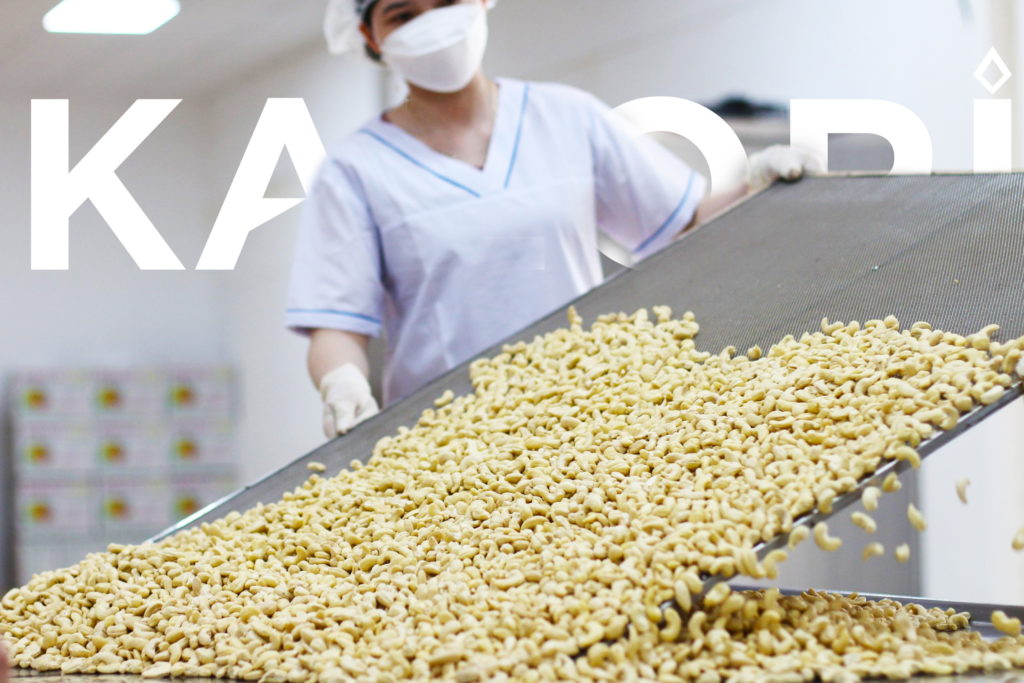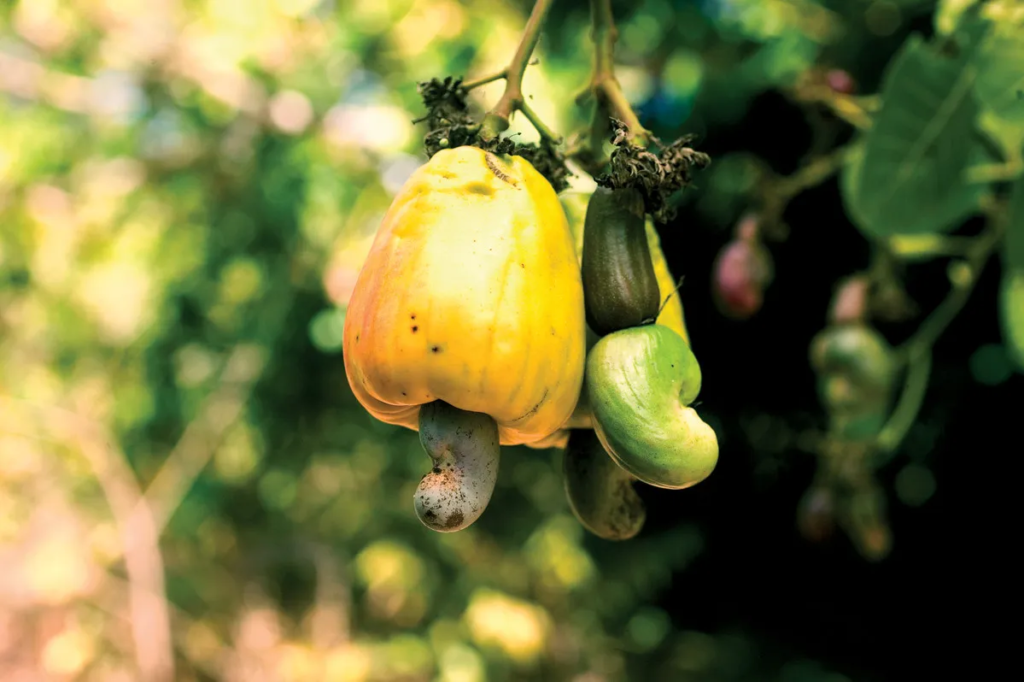
Cashews are a popular tree nut that is commonly eaten as a snack or used in cooking due to their high nutritional value. The process of making cashews includes the following stages harvesting, cleaning, shelling, drying, and roasting are a few of the stages involved in manufacturing cashews. Below is a thorough explanation of each step in the production of cashews:

Cashew apples, which are edible fruits with a single cashew nut at the bottom, are produced by cashew trees. When the cashew apples are ready, they are either hand-harvested or mechanically harvested. The apples are subsequently freed of their nuts. Cashew harvesting is a labor-intensive, multi-step procedure that requires care and patience. Below is a thorough explanation of the cashew harvesting process:
An essential phase in the cashew processing process that guarantees the quality and security of the finished product is washing and shelling the nuts. Cleaning the raw nuts to remove any dust, debris, or foreign objects is the first stage in processing cashews. Machines that use air currents and screens to separate the nuts from any undesired debris are commonly used for the cleaning process. Once the nuts are put into a hopper, they are separated by size and weight using a succession of screens and air blowers. The nuts must next be shelled after being cleaned.

Since the cashew nut is enclosed in a tough shell, the shell must be broken off before the nut can be consumed. The nuts are often boiled or roasted to soften the shell, which is then split open manually by expert personnel or with the use of a mechanized press. The nuts must be handled cautiously throughout the shelling process since the shell is exceedingly tough and contains a poisonous chemical that can irritate the skin. The nut is further cleaned to get rid of any leftover shell pieces or foreign objects once the shell has been taken off.
The nuts are assessed according to size, color, and form after being washed and shelled. While lesser grade nuts may be sold as pieces or utilized in processed meals, higher quality nuts are normally sold as entire kernels.
When the nuts are ready to be processed, they are kept in a cold, dry place after sorting. This is crucial to avoid mold or bacteria growing on the nuts and them deteriorating. Finally, to maintain their freshness and flavor, the nuts are often packaged in airtight containers before being transported to markets and shops around the world.
Owing to all the intensive elements, cashews are one of the most expensive nuts in the world, with prices that are often significantly higher than other nuts such as almonds, peanuts, or walnuts. Besides, there are several external factors that contribute to the high cost of cashews.
First off, the cashew tree is difficult to grow and needs specific circumstances, like warm, tropical climes and well-drained soil. Because of this, cashews are less commonly available than other nuts because there are fewer places where they can be farmed. It takes a lot of labor to collect and prepare cashews, and trained employees are needed to carefully separate the nuts from the hazardous shell. Higher labor costs are the outcome, and the consumer pays for them.
Also, there has been a considerable rise in the demand for cashews in recent years, especially in developed nations like the US and Europe where cashews are a common snack food. Prices have risen as manufacturers work to meet the escalating demand for this nut as a result of this rising demand.
Finally, the global supply chain for cashews is complex, with multiple layers of distribution and transportation. This adds to the overall cost of cashews, as each step of the supply chain requires additional expenses such as transportation, storage, and packaging. All of these factors contribute to the high cost of cashews, making them a luxurious and expensive snack that is enjoyed by people around the world.
As a result of a number of circumstances, cashews are among the most costly nuts in the world. The cashew tree’s specialized growing requirements restrict the places where they can be grown, and the labor-intensive harvesting and processing procedures demand skilled laborers and raise the cost of production overall.
Prices have risen further as a result of the increased demand for cashews in recent years as manufacturers work to meet the expanding global demand for this favorite snack food. The expensive price of this nut is also a result of the convoluted worldwide supply chain for cashews, which includes numerous layers of distribution and transportation. Despite their exorbitant cost, cashews are still a well-liked and delectable snack that is consumed by people all over the world.
Including these healthy snacks in your diet will help you feel better overall and lower your risk of developing heart disease. Snacks should be included in a balanced diet, but...
Cashews are a type of nut that comes from the cashew tree, which is native to Brazil. The cashew nut is actually the seed of the cashew fruit, which...

© 2025 Kaz Original Taste